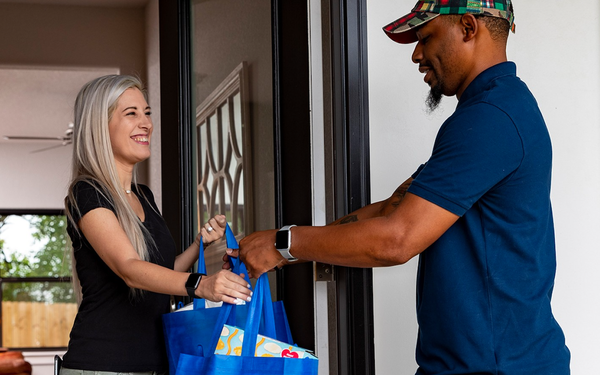by Sarah Mahoney , Staff Writer @mahoney_sarah
Source: www.mediapost.com, December 2022
New data from Incisiv, an industry insights firm, and Wynsop, which sells digital solutions, predicts an increase of between 3% and 7% in grocery spending next year. It also forecasts that 87% of grocery shoppers will order through digital channels for some of their grocery purchases.
Based on responses from 2,000 grocery shoppers and more than 200 industry leaders, the research also finds that 67% of consumers say they are likely to maintain or increase purchases of prepared foods.
The report also analyzes data from more than 18,000 shoppers, revealing that digital grocery purchases jumped 24.6% in November to $14.7 billion, compared to October. October reflected a rise of 12.4% from September, which had shown a decline.
Pickups account for 54.3% of transactions, giving them a slight edge over deliveries, at 53.7% in October.
“In the early days of digital grocery’s boom, third-party providers and delivery were very popular with shoppers,” said Gaurav Pant, chief insights officer of Incisv, in the report. This year “saw a maturation of both grocers’ ability to sell to their existing shoppers digitally and shoppers’ understanding of what really works for them. Grocers will continue to assume more ownership over digital channels as they grow further in 2023.”
Brick Meets Click also tracks online grocery shopping, and its analysis of last month’s spending leads to somewhat different conclusions.
It reports that November’s e-grocery sales total just $7.7 billion and are down 10% compared to November of the prior year. Still, those sales are down just 2% compared to both October and September.
Brick Meets Click says the decline stems from fewer households buying groceries online, lower order frequency, and less spending per order among monthly active users.
It reports a “dramatic” drop in older users, 60 and older, as well as a significant slide in those between 30 and 44, the core customer segment.
Food costs weigh heavily on shoppers, who often believe they get better deals when they shop in person while also beating service or delivery fees.
“When it comes to shopping online — especially for delivery or pickup — cost considerations include more than the price paid for a basket of products,” says David Bishop, partner at Brick Meets Click, in a blog post explaining the findings.
“Many customers also evaluate the total cost associated with using the service, which can include special charges, standard fees, and tips.”

